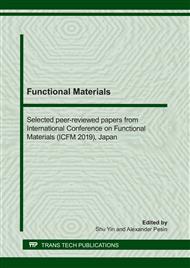p.51
p.59
p.65
p.73
p.81
p.87
p.95
p.103
p.109
Prediction of Chill Formation in Gray Irons by Thermal Analysis
Abstract:
In this study, a thermal analysis (TA) system was modified to have dual sampling cups which allowed the simultaneous pouring and data collecting. The two types of cups used were i) tellurium-containing cup and ii) non-tellurium cup. The tellurium addition ensured the iron carbide formation which gave the metastable eutectic temperature of the melts. The data were analyzed simultaneously for differences between the cooling curves. It was found that silicon increased the differences between the cooling curves (e.g. increased the ΔTEU, ΔTER and ΔTS). Both clear chill depth and total chill depth decreased with increasing silicon. Inequalities for the prediction of chill formation was proposed.
Info:
Periodical:
Pages:
87-93
Citation:
Online since:
May 2020
Price:
Сopyright:
© 2020 Trans Tech Publications Ltd. All Rights Reserved
Share:
Citation:


